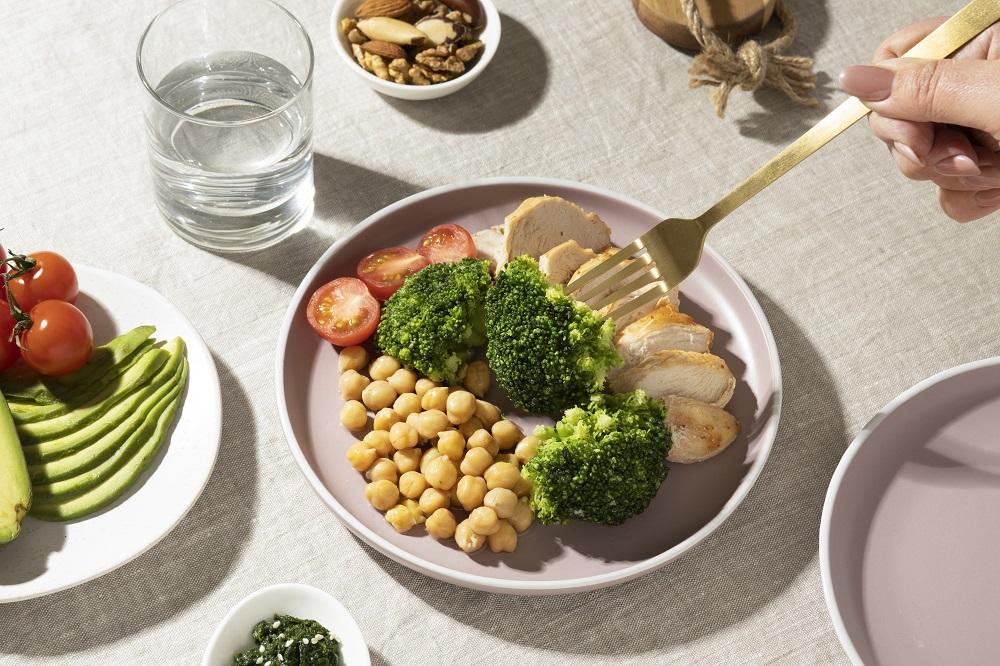Healthy Plates Made Simple: How to Build Balanced Meals Every Day
Healthful eating should not mean that your favorite foods are sacrificed or that you must follow elaborate diet plans. In fact, one of the simplest yet most effective means of eating well is to begin with the good plate. By creating refections that are various, balanced, and rich in nutrients, you’re giving your body what it needs to thrive.
The conception of healthy plates is not just a trendy expression — it’s a powerful tool for everyday health, energy, and well-being. This companion walks you through practical, pleasurable, and flexible ways to produce healthy, balanced refections that nourish your body and keep you feeling satisfied.
What’s a Healthy Plate?
A healthy plate is a simple visual way to portion your refections so that you’re getting the right blend of nutrients. The general rule of thumb, recommended by experts like Harvard’s Healthy Eating Plate, breaks your plate into these three corridor:
- 50% vegetables and fruits
- 25% whole grains
- 25% lean protein
Add healthy fats in temperance and hydrate with water, not sticky drinks. This structure ensures you’re getting fiber, vitamins, minerals, and sustainable energy at every mess.
Start with Various Vegetables and Fruits
Half your plate should be filled with fresh, various yield. Why? Because fruits and vegetables are high in vitamins, antioxidants, water, and fiber — all essential for digestion, immunity, and glowing skin.
Try to include:
- Lush flora like spinach, kale, or arugula
- Bright veggies like bell peppers, broccoli, or beets
- Seasonal fruits like berries, oranges, or apples
Pro Tip: Eat the rainbow. The further colors you include, the more nutrients you get.
Add Spare Protein for Strength and Satiety
Protein builds muscle, repairs cells, and keeps you full. It also plays a crucial part in hormone balance and immune function. On your healthy plate, reserve one-quarter for spare protein sources.
Some great options:
- Grilled chicken or lemon
- Ignited or fumed fish like salmon or cod
- Factory-based proteins like lentils, chickpeas, tofu, or tempeh
- Eggs or low-fat dairy
You don’t need to eat meat to get protein. Just aim for variety and high-quality sources.
Choose Whole Grains Over Refined Carbs
Whole grains give lasting energy thanks to their fiber content. Unlike refined carbs, which can cause blood sugar spikes, whole grains help you feel full and maintain stable energy levels.
Healthy whole grain choices:
- Quinoa
- Brown rice
- Barley
- Whole wheat pasta
- Oats
Exchange white rice, white bread, and sugary cereals for whole grain versions to boost your fiber input.
Don’t Forget Healthy Fats
Fats aren’t the adversary. In fact, healthy fats support brain health, heart health, and hormone production. They also help you absorb fat-soluble vitamins like A, D, E, and K.
Incorporate these into your plate:
- Avocados
- Olive oil
- Nuts and seeds (chia, flax, almonds, walnuts)
- Fatty fish like mackerel and sardines
Remember — moderation is key. A drizzle of olive oil or a sprinkle of nuts is enough to get the benefits without overdoing calories.
Make Water Your Main Drink
Hydration is frequently overlooked but is essential for digestion, energy, and focus. Skip sugary sodas and juices—opt for water, herbal teas, or fruit-infused water.
Easy ways to drink more water:
- Keep a bottle on your desk
- Add lemon, cucumber, or mint for flavor
- Set reminders throughout your day
Hydrated cells work better—your skin, organs, and even your mood will thank you.
Practice Portion Control Without Measuring
Portion sizes can sneak up on us. You don’t need a food scale to eat well—just be mindful.
Use this simple hand method:
- Protein = size of your palm
- Grains = size of your fist
- Vegetables = as much as you can fit in both hands
- Fat = size of your thumb
This system works anywhere—whether you’re at home, at a restaurant, or packing lunch.
Sample Healthy Plate Ideas You’ll Love
Need some inspiration? Try these simple, delicious combinations:
Mediterranean Plate
- Grilled chicken breast
- Quinoa salad with cucumber and tomato
- Steamed spinach with olive oil
- Water with lemon
Plant-Based Plate
- Baked tofu or chickpeas
- Brown rice
- Roasted carrots and broccoli
- Fresh fruit for dessert
Quick Breakfast Plate
- Scrambled eggs with spinach
- Whole grain toast with avocado
- Mixed berries
- Herbal tea or water
Make Healthy Plates a Daily Habit
You don’t need to make every plate perfect—just aim for balance most of the time. Keep ingredients simple, fresh, and easy to prep. Try meal prepping once a week so you always have go-to components ready to assemble.
A few smart habits:
- Plan your meals on Sunday
- Keep pre-washed veggies in your fridge
- Cook extra grains for leftovers
- Stock healthy proteins in your freezer
Healthy eating becomes second nature when your kitchen supports your goals.
Conclusion
Creating a healthy plate isn’t about dieting—it’s about fueling your body with intention and care. With the right portions of vegetables, grains, protein, and healthy fats, you can feel your best every day without stress or restriction. Start with small changes, enjoy the process, and build a lifestyle that truly supports your health and happiness—one balanced plate at a time.
